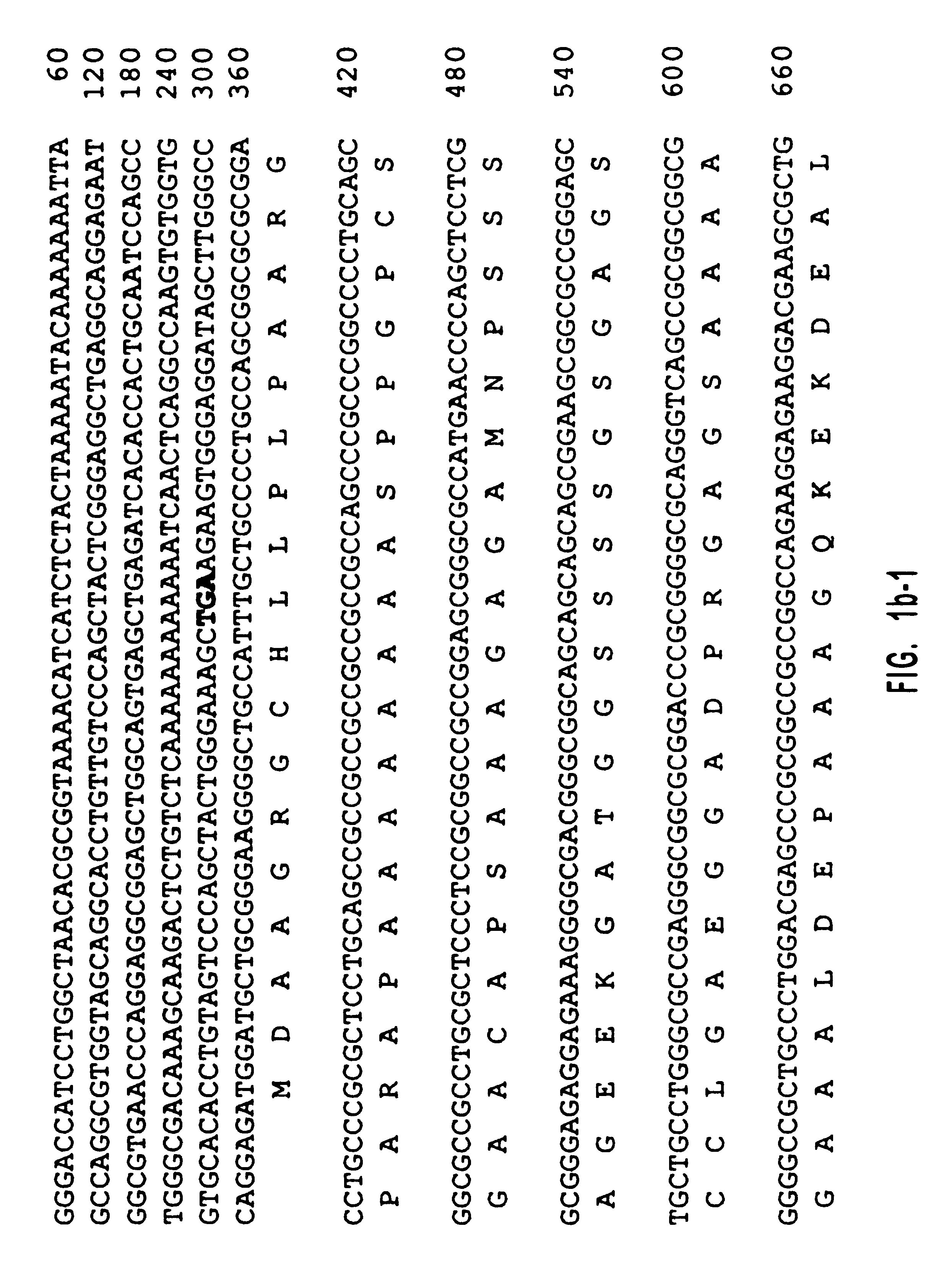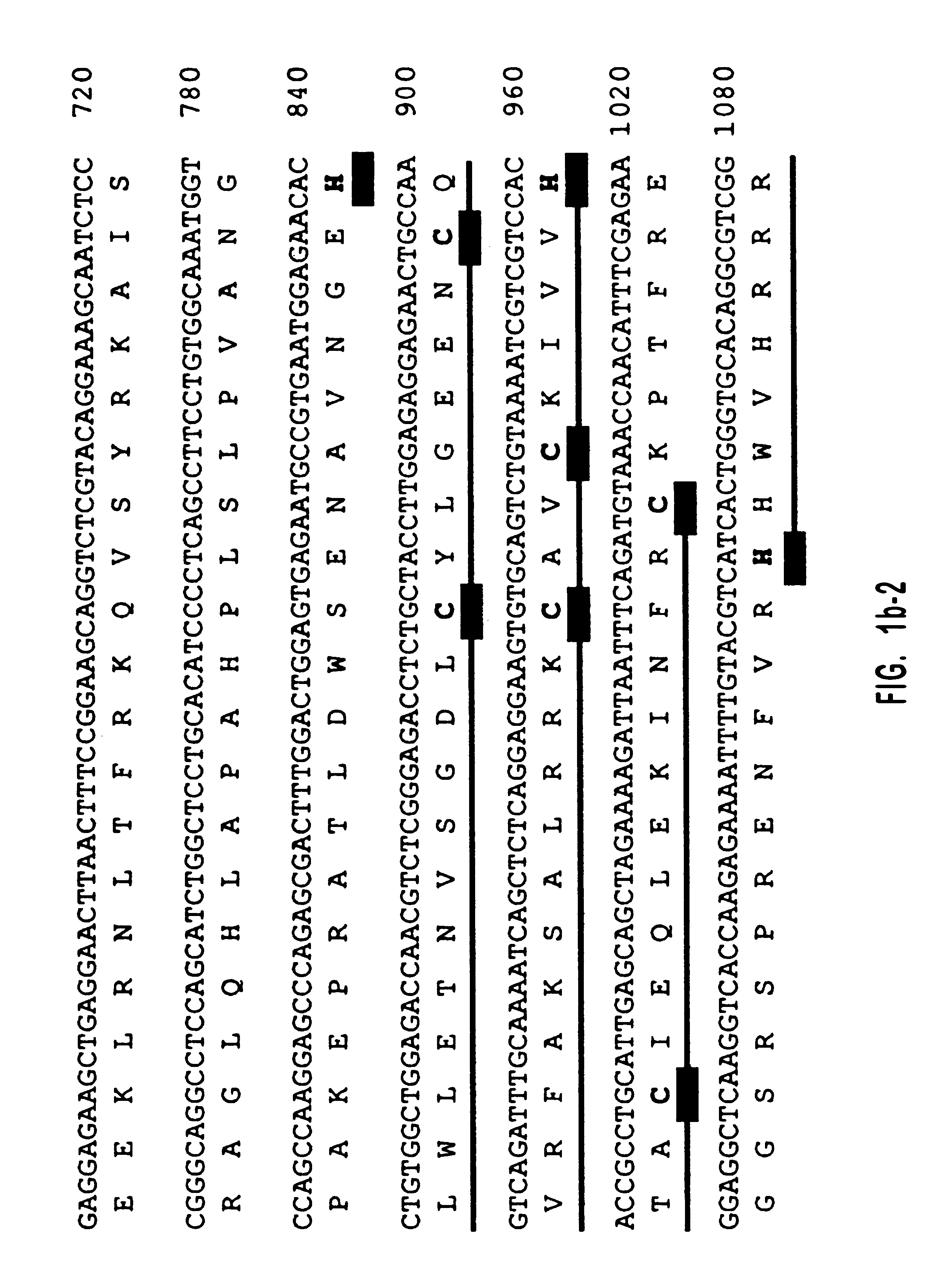Human diacylglycerol kinase iota
a technology of diacylglycerol and kinase, which is applied in the direction of enzymology, peptides, transferases, etc., can solve the problems of complex conclusion, inability to impermeable walls of biological membranes,
- Summary
- Abstract
- Description
- Claims
- Application Information
AI Technical Summary
Benefits of technology
Problems solved by technology
Method used
Image
Examples
example 1
EST (Expressed Sequence Tag) Search
A DGK.zeta. cDNA sequence was used to perform a BLAST search against the EST database. An EST clone (Genbank accession H37913) was found which was similar to the cysteine-rich region of the DGK family, but its nucleotide sequence was distinct. The EST purchased from ATCC was I.M.A.G.E. Consortium CloneID 437714 and was obtained from the I.M.A.G.E. Consortium (LLNL) cDNA. This cDNA clone was sequenced and used to probe other libraries.
example 2
Isolation and Characterization of cDNAs
One million phage recombinants were plated from a human retina cDNA library (Clontech). All plaques were transferred to hybond-N nylon membranes (Amersham), which were screened with two HindIII and XhoI digested EST fragments. Membranes were prehybridized (4 h; 65.degree. C.) in 5.times.SSPE, 5.times.Denhardt's, 0.2% SDS, and 0.1% Na.sub.2 P.sub.4 O.sub.7. Hybridization was performed (overnight; 65.degree. C.) in the same solution. The membranes were washed twice in 0.6.times.SSPE, 0.1% SDS, and 0.1% Na.sub.2 P.sub.4 O.sub.7 (30 min; 65.degree. C.). Two positives were isolated from the screening. These two positives were released from .lambda.gt11 vector by EcoRI, subcloned into pBluescriptII and sequenced. This library was screened once more by using these two clones as probes. Since the 3' coding sequence is missing in these clones, the first two isolated clones were further used as probes to screen a human brain .lambda.gt11 cDNA library (Cl...
example 3
Northern Blotting
Clone R13-1, containing the sequence around the catalytic domain region of DGK.iota. in a pBluescriptII vector, was linearized by HindIII and used as a template for digoxigenin-labeled riboprobe synthesis. The human multiple tissue Northern blot and human multiple brain Northern blots were performed by using this probe following the procedure described in M. Bunting et al. (1996), J. Biol. Chem. 271:10230-10236 ("Bunting et al.").
PUM
| Property | Measurement | Unit |
|---|---|---|
| Fraction | aaaaa | aaaaa |
| Fraction | aaaaa | aaaaa |
| Angle | aaaaa | aaaaa |
Abstract
Description
Claims
Application Information
 Login to View More
Login to View More - R&D
- Intellectual Property
- Life Sciences
- Materials
- Tech Scout
- Unparalleled Data Quality
- Higher Quality Content
- 60% Fewer Hallucinations
Browse by: Latest US Patents, China's latest patents, Technical Efficacy Thesaurus, Application Domain, Technology Topic, Popular Technical Reports.
© 2025 PatSnap. All rights reserved.Legal|Privacy policy|Modern Slavery Act Transparency Statement|Sitemap|About US| Contact US: help@patsnap.com



